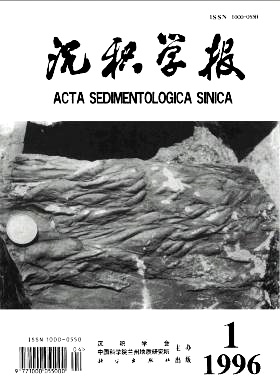Element Statistical Analysis of Mudstones in a Lacustrine-Deltaic Depositional Pakage for Studies of Genetic Stratigraphy
- Received Date: 1994-04-02
- Publish Date: 1996-03-10
-
Key words:
- lacustrine-delta /
- mudstone /
- element factor analysis
Abstract: At the third and fourth members of Quantou Group,Middle Cretaceous in the east of the neighbouring area of the Daqing oilfield, it is revealed that the element abundances and their ratios of mudstones in a lacustrine-deltaic (subaqueous)depositional pakage are controlled by basin-in factors(reducing F1, acidity F2) and basin-out factors (protolith F3, colloid input F4)while the general geochemical rules of the element behaviours are combined with R-mode factor,Q-mode cluster, Q-mode factor analyses and other geologic features, which are expressed conspicuously in correlations of Sr/Ca positive to reducing and acidity, CaO/MgO negative to acidity, Ni/Co negative to reduction, Ti/V negative to influence of basic protolith,Sr/Ba negative to colloid input. The mode cluster demonstrates that the mudstones are devided into four types, which with intercalated siltstones(spread flow genetic units)construct the subaqueous channal periphery fine sedimentary associations(SPF),coastal-shallow lake sedimentary associations(CSL),prodelta sedimentary associations(PDT) and deeper lake sedimentary associations(DPL) in an increasing depositional depth with water chemistry changing gradually from alkali and strongly oxidative to weakly alkali and oxidative. The basic protolith influences more strongly on the SPF and PDT than on the CSL and sometimes intensely on the DPL because of the gravity flows derived from the delta front. The colloid inputs are of not striking differences among all of the associations.
| Citation: | Wu Jinhua, Yu Suyu. Element Statistical Analysis of Mudstones in a Lacustrine-Deltaic Depositional Pakage for Studies of Genetic Stratigraphy[J]. Acta Sedimentologica Sinica, 1996, 14(1): 59-68. |






 DownLoad:
DownLoad: